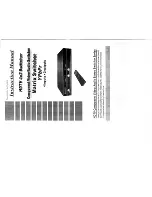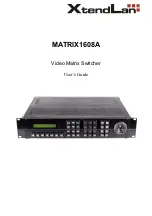
DGS-3312SR Stackable Gigabit Layer 3 Switch
230
LSDB Type
Displays which one of eight types of link advertisements by which the current link was
discovered by the Switch: Router link (
RTRLink
), Network link (
NETLink
), Summary link
(
Summary
), Autonomous System link (
ASSummary
), and Autonomous System external
link (
ASExtLink
).
Adv. Router ID
Displays the Advertising Router’s ID.
Link State ID
This field identifies the portion of the Internet environment that is being described by the
advertisement. The contents of this field depend on the advertisement's LS type.
LS Type
Link State ID
____________________________________________
1
The originating router's Router ID.
2
The IP interface address of the network's Designated Router.
3
The destination network's IP address.
4
The Router ID of the described AS boundary router.
Cost
Displays the cost of the table entry.
Sequence
Displays a sequence number corresponding to number of times the current link has been
advertised as changed.
Browse OSPF Neighbor Table
This table can be found in the
OSPF Monitor
folder by clicking on the
Browse
OSPF Neighbor Table
link. Routers that
are connected to the same area or segment become neighbors in that area. Neighbors are elected via the Hello protocol. IP
multicast is used to send out Hello packets to other routers on the segment. Routers become neighbors when they see
themselves listed in a Hello packet sent by another router on the same segment. In this way, two-way communication is
guaranteed to be possible between any two neighbor routers. This table displays OSPF neighbors of the Switch.
Figure 8- 32. OSPF Neighbor Table window
















































